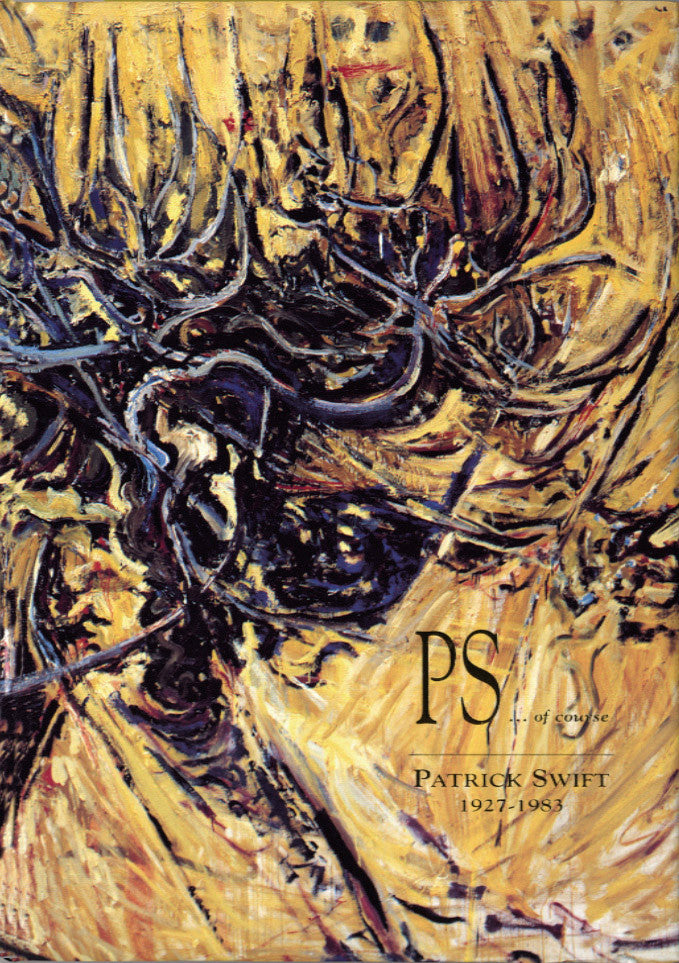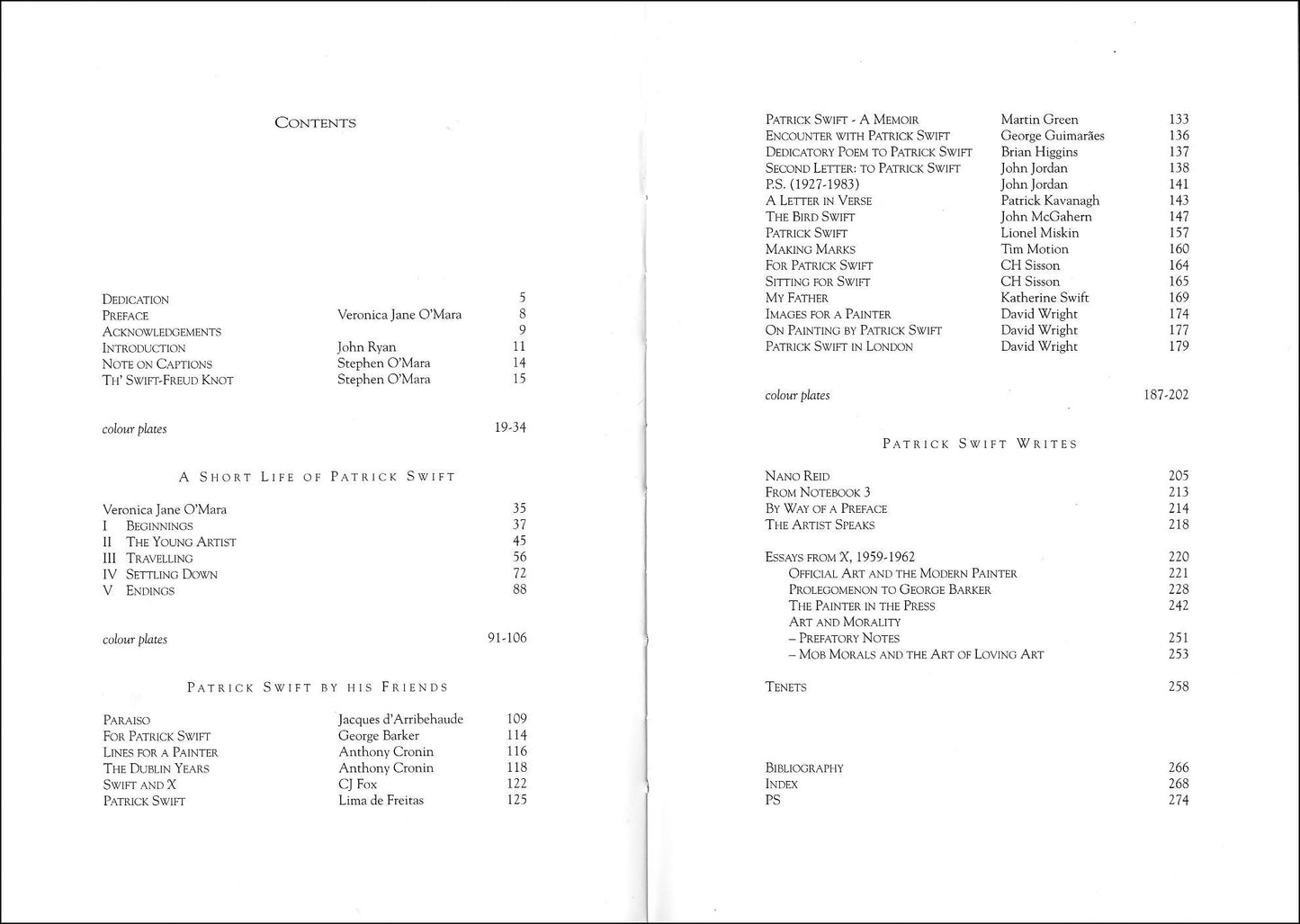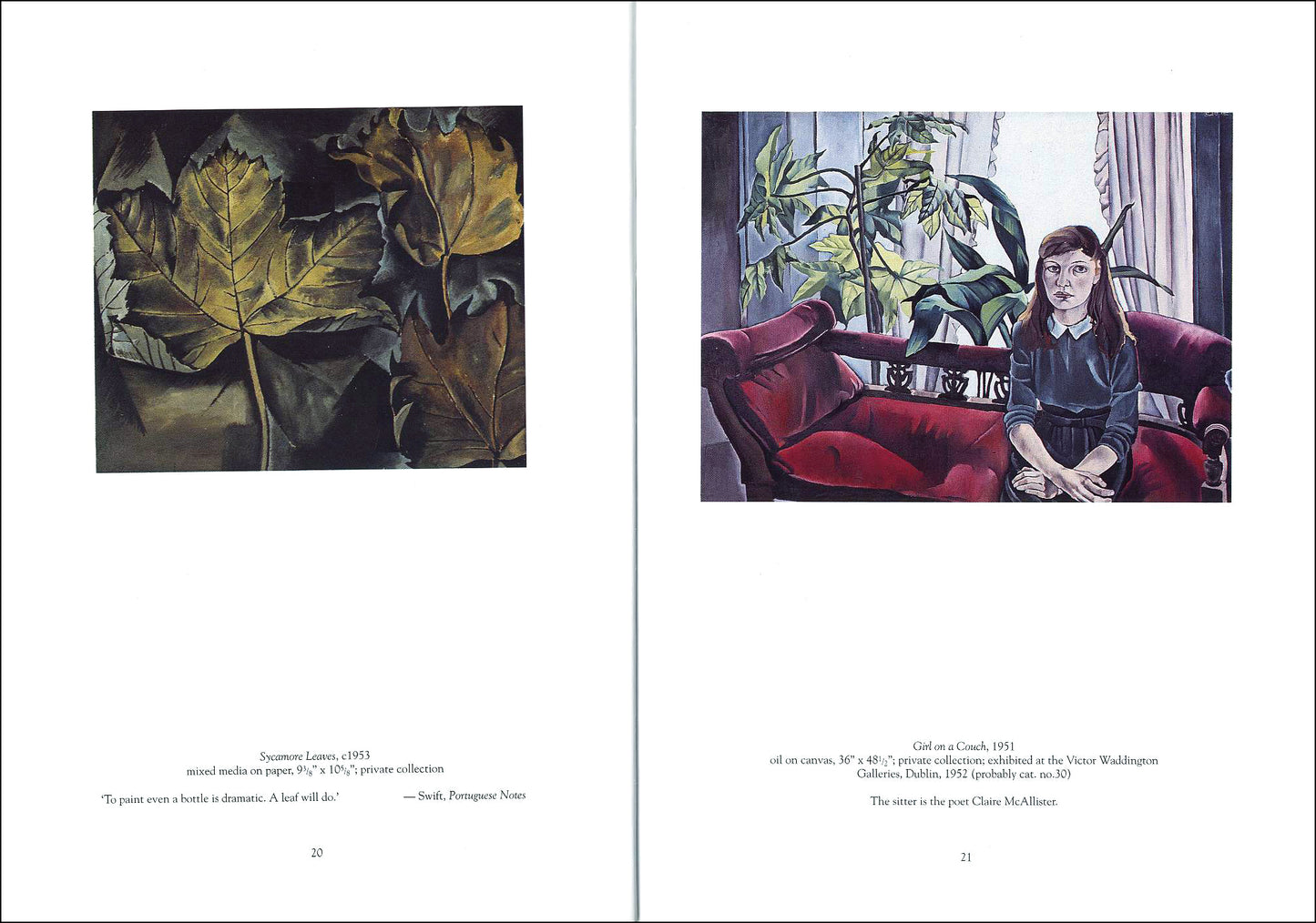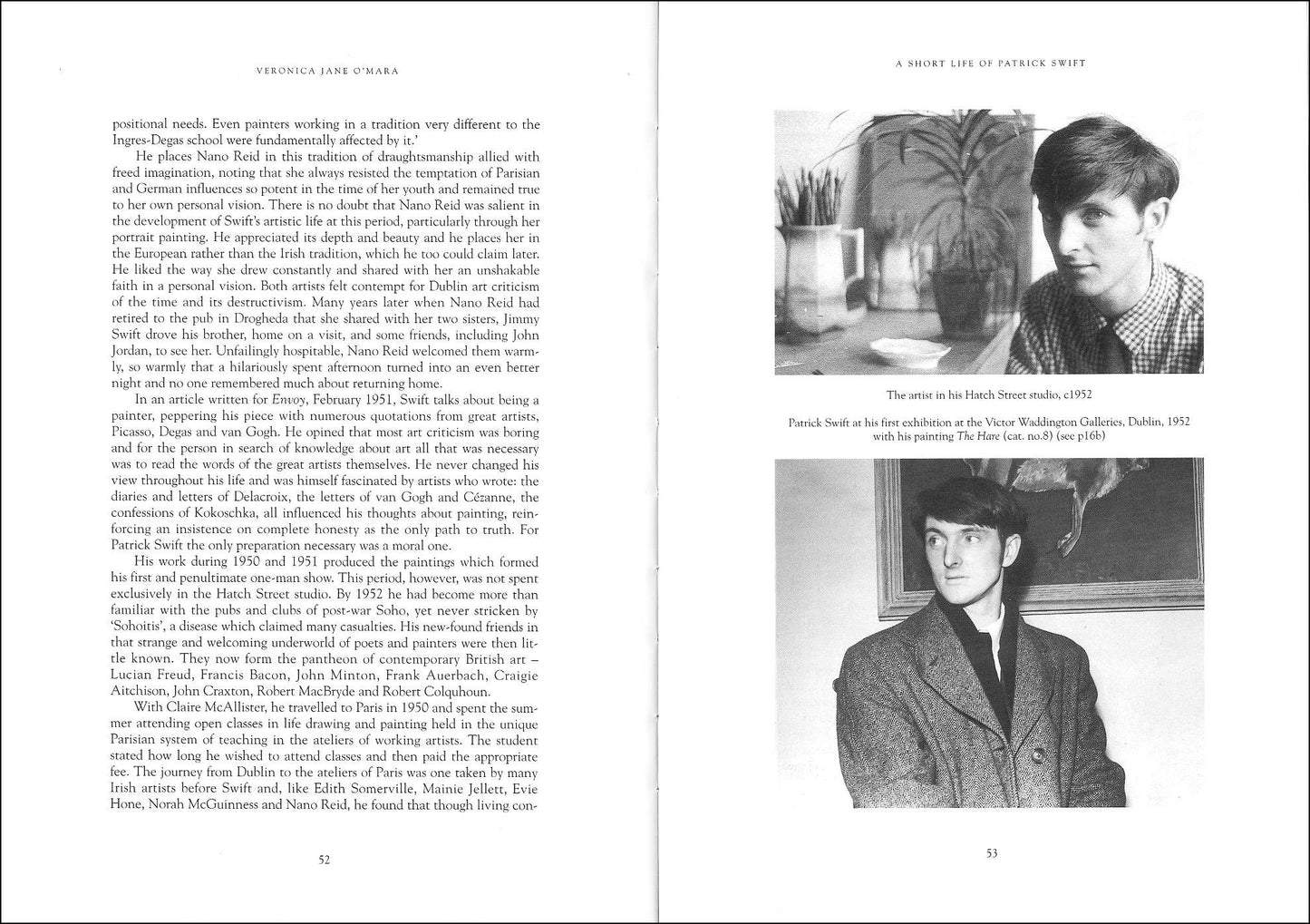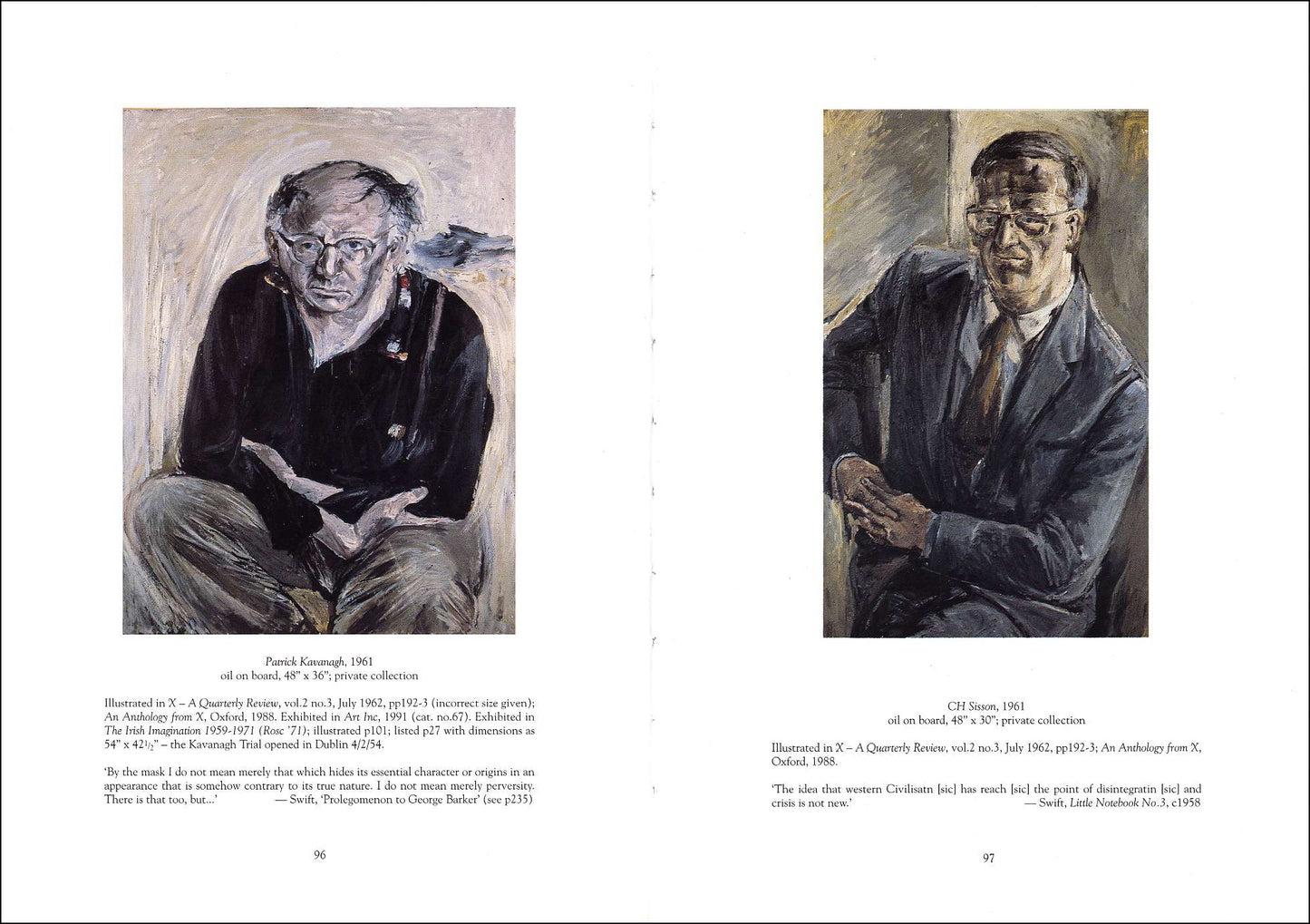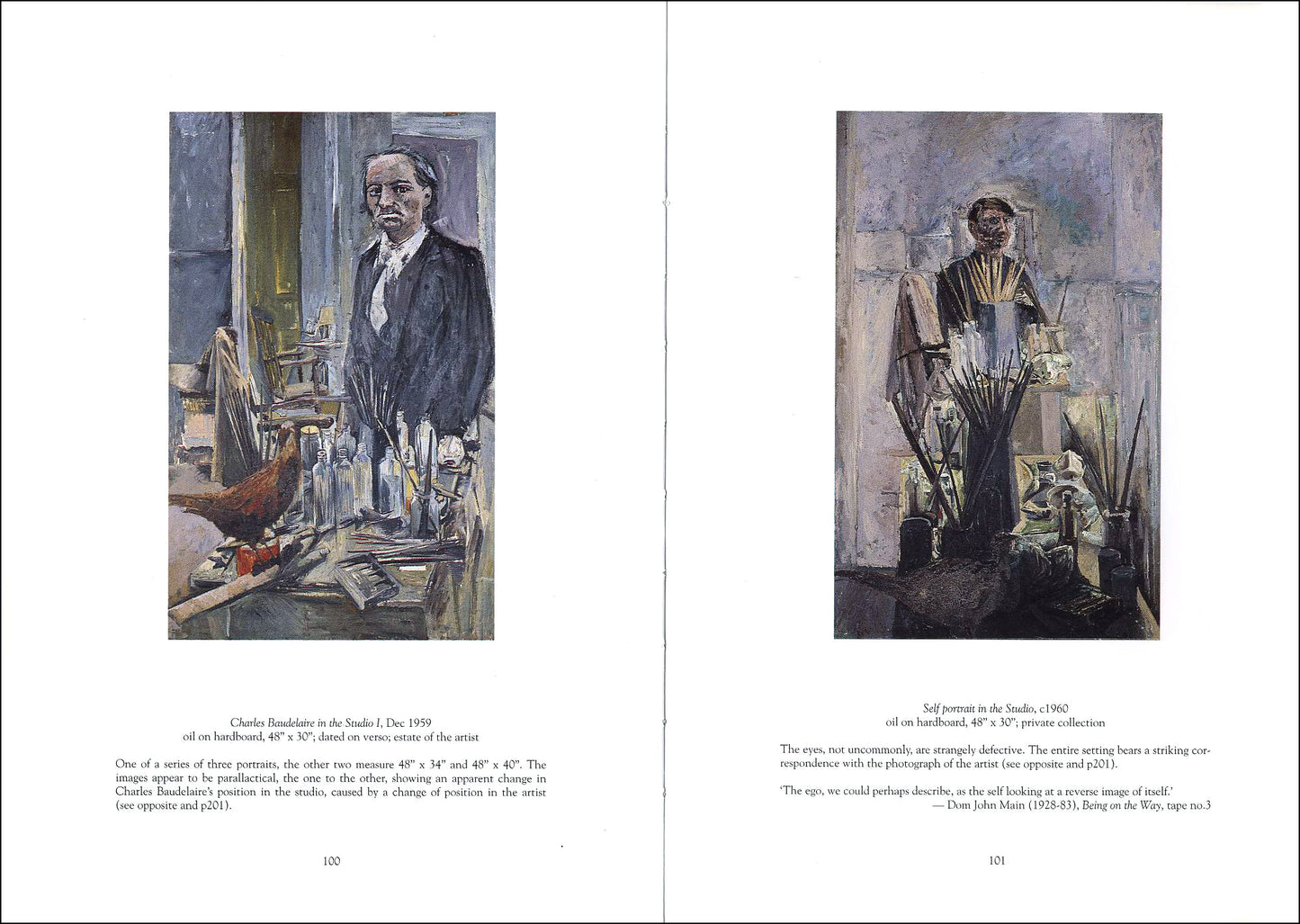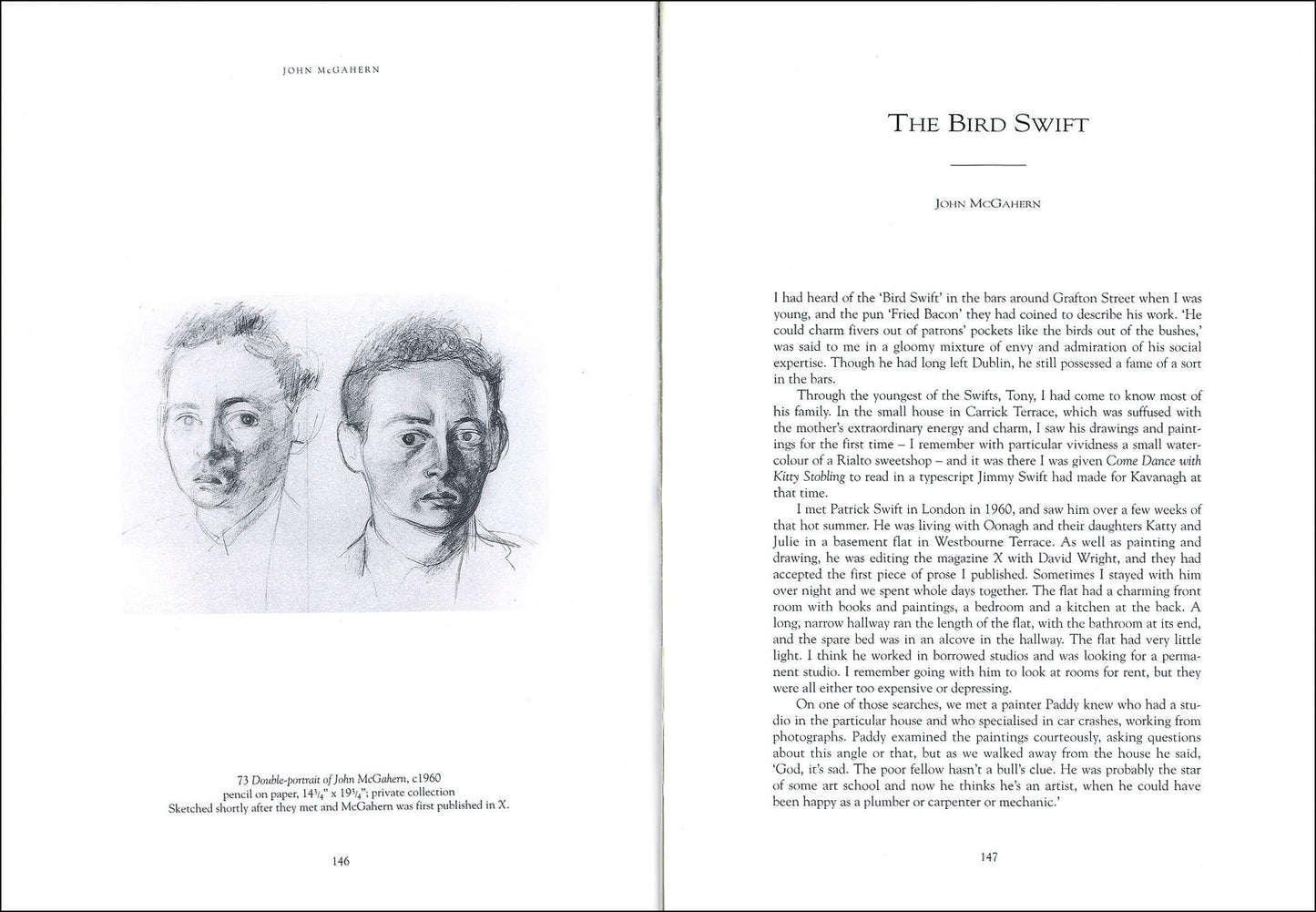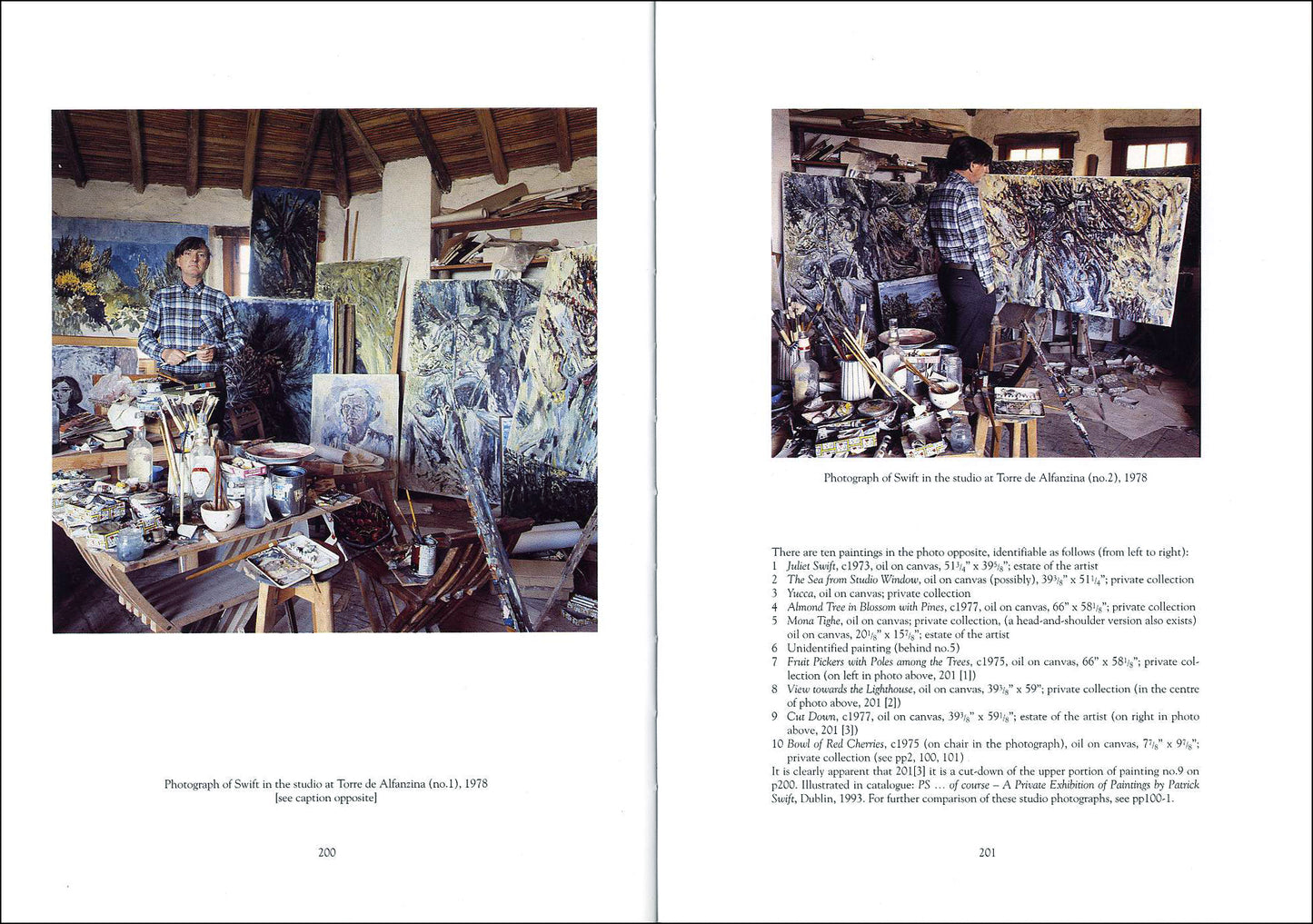Gandon
PATRICK SWIFT (1927-1983) – PS of course
PATRICK SWIFT (1927-1983) – PS of course
Couldn't load pickup availability
Share
ed. Veronica Jane O’Mara
essays by John McGahern, Patrick Kavanagh, Anthony Cronin, David Wright, CH Sisson et al; selected essays by Patrick Swift
ISBN 978 0946641 376 274 paperback (hardback) 24x17cm 160 illus index
The artist and writer Patrick Swift is recognised as a major artist, entirely deserving of acclaim, who produced work of outstanding quality up until the time of his premature death in 1983. Patrick Swift was a man of extraordinary intellect, vivacity and wit. Preoccupied with truth, art and literature, he found a comfortable niche among the literary set in Dublin, and was close friends with Patrick Kavanagh and Anthony Cronin. During his years in London, where he lived before finally settling in the Algarve, he associated with the poets and painters of Soho, including Francis Bacon, Lucian Freud, George Barker and David Wright, but he shunned the limelight and never courted publicity. This comprehensively illustrated book is a thoroughly researched biography of the artist, which includes selected essays by Swift himself, and an anthology of writings by his contemporaries.
EXTRACTS
"I first met Patrick Swift in McDaid’s bar off Dublin’s Grafton Street shortly after the end of World War II. He was then employed by the local gas company but had already decided on becoming an artist. At that time he was rather a dandy in his dress, favouring the dark well-cut suit and the gold-knobbed cane. Later I was to learn that these were part of his father’s wardrobe. But they seemed to fit him splendidly and he cut a fine figure wearing these faintly old-fashioned clothes and accessories. He also wore a close-cropped beard. He was a friend of a number of friends of mine and we were near enough contemporaries. Dublin tended towards being a more Bohemian town then than it is now. Yet there was no government patronage of the arts then at all.
Two particular friends were the poets Anthony Cronin and John Jordan. The small Bohemian society made it more or less inevitable that we should all meet at an early age. It was I who introduced Paddy (as we called him then) to another Paddy, namely Patrick Kavanagh – undoubtedly the most important poet since WB Yeats. Many years separated them yet they got on immediately. Swift, in fact, made a decided impact on Kavanagh. It is hard to believe now that it was mainly a cultural impact and that he actually changed the older man’s entire approach to poetry...
Swift was a man of abundant talents, being amongst other things an artist, a writer, a businessman, a potter, an illustrator and a stage designer ... He excelled in so many things, but it must be admitted that it is as an artist, a painter, that he will be really remembered. This present volume, a tribute from his friends and admirers alike, will bring the magic of his work to the attention of a much larger audience; indeed to posterity itself."
— from the introduction by John Ryan
"In an article written for Envoy, February 1951, Swift talks about being a painter, peppering his piece with numerous quotations from great artists, Picasso, Degas and van Gogh. He opined that most art criticism was boring and for the person in search of knowledge about art all that was necessary was to read the words of the great artists themselves. He never changed his view throughout his life and was himself fascinated by artists who wrote: the diaries and letters of Delacroix, the letters of van Gogh and Cézanne, the confessions of Kokoschka, all influenced his thoughts about painting, reinforcing an insistence on complete honesty as the only path to truth. For Patrick Swift the only preparation necessary was a moral one.
His work during 1950 and 1951 produced the paintings which formed his first and penultimate one-man show. This period, however, was not spent exclusively in the Hatch Street studio. By 1952 he had become more than familiar with the pubs and clubs of post-war Soho, yet never stricken by ‘Sohoitis’, a disease which claimed many casualties. His new-found friends in that strange and welcoming underworld of poets and painters were then little known. They now form the pantheon of contemporary British art – Lucian Freud, Francis Bacon, John Minton, Frank Auerbach, Craigie Aitchison, John Craxton, Robert MacBryde and Robert Colquhoun. With Claire McAllister, he travelled to Paris in 1950 and spent the summer attending open classes in life drawing and painting held in the unique Parisian system of teaching in the ateliers of working artists. The student stated how long he wished to attend classes and then paid the appropriate fee. The journey from Dublin to the ateliers of Paris was one taken by many Irish artists before Swift and, like Edith Somerville, Mainie Jellett, Evie Hone, Norah McGuinness and Nano Reid, he found that though living conditions could be hard, working in Paris made up for it. Financial problems were solved by sketching portraits of tourists in the streets; spare time was spent visiting the galleries."
— from Veronica Jane O’Mara’s biography of Swift
|
CONTENTS Dedication 5 COLOUR PLATES 19-34 A SHORT LIFE OF PATRICK SWIFT Veronica Jane O’Mara 35 I – Beginnings 37
II – The Young Artist 45
III – Travelling 56
IV – Settling Down 72
V – Endings 88
COLOUR PLATES 91-106 PATRICK SWIFT BY HIS FRIENDS Paraiso Jacques d’Arribehaude 109 COLOUR PLATES 187-202 PATRICK SWIFT WRITES Nano Reid 205 Essays from X, 1959-1962 220 Official Art and the Modern Painter 221 Tenets 258 |
He may well be one of the greatest of Irish painters. When the dust has settled and the critics have had their say, the paintings will speak for themselves ... His paintings hold you and address you in a language so intimate and disturbingly personal that even if you don’t know much about art you are aware you have been moved at a visceral level. — Marion McDonald, Sunday Business Post
Gandon has published a beautifully produced book ... Delightfully illustrated and imaginatively conceived, the book has fifty colour plates and countless photographs of the artist’s family, friends, studio and paintings. — Marion McDonald, Sunday Business Post
No painter here since the Literary Revival has had a more central role in cultural life ... There can be few Irishmen of his epoch, whether poets or painters or novelists, who are of such biographical interest and who touched their age at so many key points. — Brian Fallon, Irish Times
The book is beautifully designed by John O’Regan ... a fascinating insight into the extraordinary life and personality of Patrick Swift ... lavishly illustrated in colour and black and white. — Wanda Ryan-Smolin, Irish Arts Review
Encouraged by the fact that Patrick Swift wrote an admiring article on Nano Reid, one artist in praise of another, which is published in the excellent book PS of course – Patrick Swift (Gandon Editions), I dare to make a reciprocal gesture on Swift himself. His exhibition at the Royal Hospital quite simply bowled me over, and I realised at once that I was looking at pictures by probably the most formidable Irish artist of this century – perhaps including Jack Yeats ... The dozen or so late portraits shown at Kilmainham or in the Gandon book have even more impact than the later Freud portraits have.” — Derek Hill in a letter to the Irish Times
The various contributions vary in character ... with that of John McGahern outstanding in its evocation of time, place, person and relationship. — Des MacAvock, Books Ireland
Patrick Swift ... a biography of an Irish painter who was central in the art and literary scene of his time. — Eileen Battersby, ‘Books to read in front of a roaring fire’, Irish Times
The book is complex, and all the more interesting for that ... Let nobody dare say that Ireland hasn’t contributed a more than fair share of visual artists to the world — Books Ireland
The lost hope of Irish art ... belated recognition for Patrick Swift, a painter born out of his time. — Aidan Dunne, Sunday Tribune
Certainly, from now onwards, no one can write Patrick Swift out of Irish art history.— Brian Fallon, Irish Times
